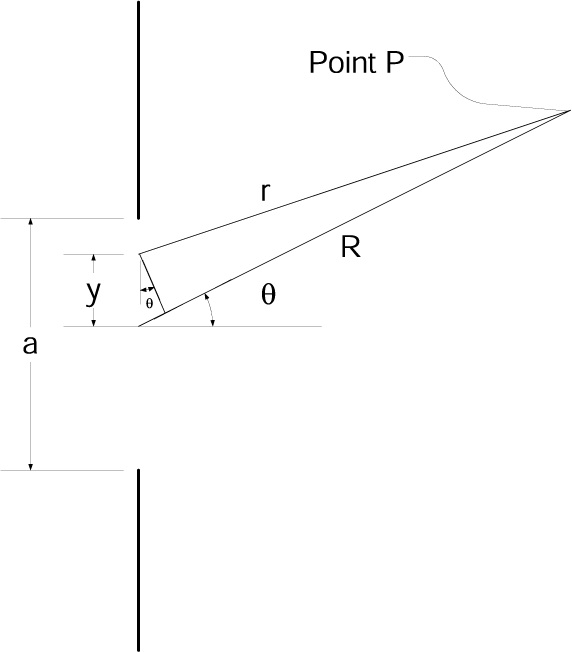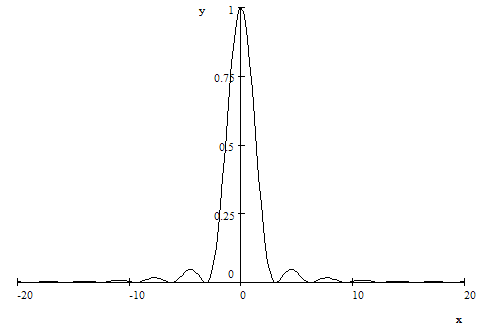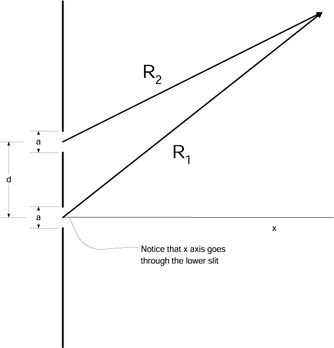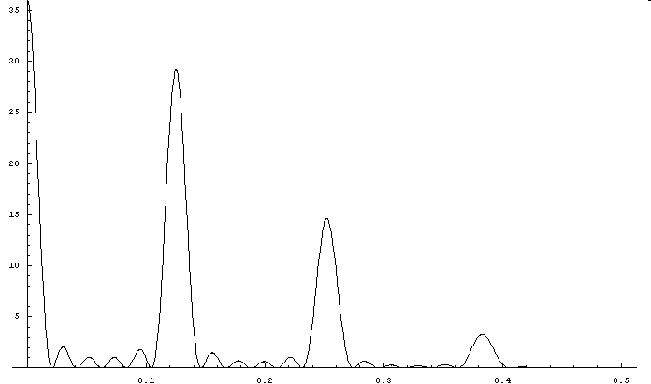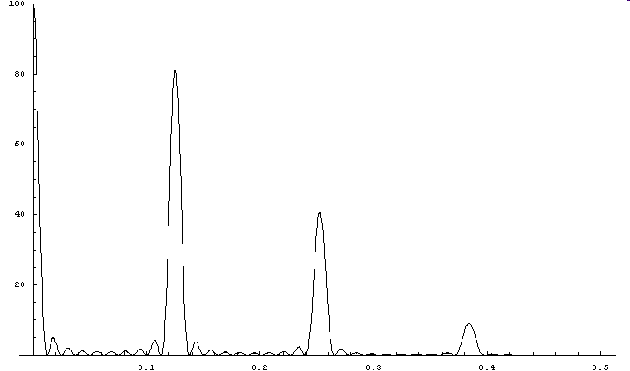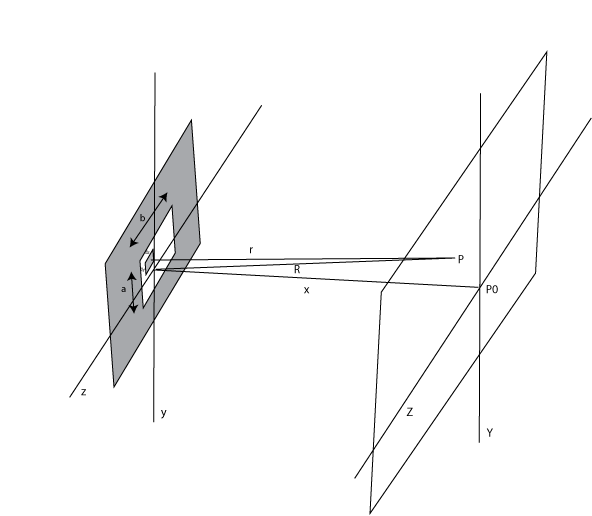Consider the contribution to the field
 at a P due to a small element of the slit
ⅆ
y
at
y
.
It is a distance
r
from P.
R
is the distance from the center of the slit to P.
at a P due to a small element of the slit
ⅆ
y
at
y
.
It is a distance
r
from P.
R
is the distance from the center of the slit to P.
lets define
εL
which is the source strength per unit length, which is a constant.
then

Now from the drawing
 Now assume that
y
<
<
R
(which gives us the Franhaufer condition) and
Now assume that
y
<
<
R
(which gives us the Franhaufer condition) and
 now expand the square root
now expand the square root
 and neglect higher terms so that
r
=
R
−
y
sinθ
thus
and neglect higher terms so that
r
=
R
−
y
sinθ
thus
 where now we have used R in the denominator since it is much bigger than y
where now we have used R in the denominator since it is much bigger than y

now integrate assuming that
θ
is a constant over the slit

now we define
 and see that we can rewrite our expression as
and see that we can rewrite our expression as
 or equivalently
or equivalently

The intensity will go like the square of this so
I
=
I0s
i
n
c2β
Plot of

The Intensity has a maximum at
β
=
0
or
θ
=
0
.
there are minima when
sinβ
=
0
or


 in the case of small
θ
we see that
in the case of small
θ
we see that
 is the distance between adjacent minima.
is the distance between adjacent minima.
As
a
becomes large, we see that the minima will merge together. This is consistent
with what we said at the beginning, that if
a
>
>
λ
then you just get shadowing but not diffraction.
Finding the secondary maxima is more difficult. (Take the derivative of I and
then look for zeros.) This can not be done analytically.
Note that wee have been considering only one dimension. If the length of the
slit is
L
then we have only considered the case that
L
>
>
λ
and so diffraction occurs only in the other dimension.





